To run the forums, host the website, and travel, I charge a universal service fee for my reviews. This review was sponsored by PEGASUS. My goal is to be transparent and unbiased, this video and written review are not meant to be an endorsement of PEGASUS products.
For those unfamiliar with PEGASUS, it is a sub company under the BULLS ebike manufacturer from Germany that offers many options with commuter bikes being their focus. Such is the case with the PREMIO SPEED we have today. It is a 28mph speed pedelec Bosch powered mid-drive that comes in a step-through (wave) and a high-step version. The bike is similar to the previous reviewed PEGASUS CROSS, so if you read that review, you will see some parallel information. However, the SPEED has a lot more upgrades so we will try to call those out as we go along. There are a few differences between the two like the 54.9lb weight on the high-step and the 57.3lbs on the step-through. So the tradeoff for the step-through is that it weighs a bit more, but you have a much more approachable bike. The step-through also has a tiny bit of frame flex, but they do their best to eliminate it on this frame with lots of strong and sturdy gussets. The good thing is that because it is sold under the BULLS brand, they have a network of dealers across the country and you can even test ride them to see which you like the most. All in all it comes in 4 sizes between the 2 frames and retails for $3,599. Like the CROSS, it is great as a feature complete commuter bike, it has a rear 55lb rated rack with dedicated pannier hangers and pannier blockers, SKS plastic fenders with multiple sturdy mounting points, and a kickstand in the rear to eliminate annoying pedal lock when reversing. While commuters are great with utility, this one also has comfort like the gel saddle, ergonomic grips, and full chain cover. The bike goes a step further with a front suspension fork with lockout and preload adjust. The fork is slim and minimalist which matches the tires well too. These are Schwalbe Marathon Plus tires at 28”x1.5”. These are narrow and more efficient than the tires found on the more basic CROSS, and I love that they also upgraded to reflective sidewalls and puncture protection. Another upgrade here is the battery integrated lights. While the CROSS has both, this one has a headlight with side windows to peek some light out for visibility for side viewing traffic. And a big win here is that the rear light is an active brake light when you squeeze those brake handles, super cool! Overall, I would say it is a little more heavy duty than the CROSS, probably because it was meant to handle higher speeds, and it has a pretty upright and relaxed commuting position.
Driving this bike is one of the sportiest, and smartest, electric bike motors around today. It’s the Bosch Performance Line Speed, which offers up to 63 Newton meters of torque and 120 RPM pedal support. This means that it can start and climb well (even if you’re not in the optimal gear), and it will allow you to spin quickly to reduce leg muscle power and focus on cardio if that’s your preference. It is my preference, in fact, because I have a knee injury. Some other mid-drive electric bike systems (even Bosch’s own Active Line motors) max out around 100 or 110 RPM, so you literally have to switch gears in order to ride faster. It’s less of an issue when your max speed is 20mph, but it becomes very noticeable with a 28mph speed pedelec like this. The Performance Line motors have taken a unique approach with their chainring spec that makes them quick and efficient for the motor, but louder and possibly less efficient for you as the rider (if the bike is turned off or you’re trying to pedal beyond the supported speeds). They have a reduction gear inside that spins the chainring at 2.5 revolutions for each crank arm revolution. Bosch representatives have told me that it improves chain retention, but it also makes swapping chainring sizes less straightforward… because they are proprietary. It means that the chain cover is smaller and the chain itself is lower, but might allow for increased chain contact with the right chain stay when riding over bumpy terrain. I trust Bosch, have enjoyed this and other motors that they produce on many other leading electric bikes over the years, I feel that the trade-offs are worth it. One thing that is definitely a pro here, is the two-year comprehensive warranty and support from a wide network of Bosch-Certified dealers. I visit shops all over North America and many have told me that the Bosch drive systems are some of their most reliable, and that the company provides quick support with hardware that does need fixes or replacements. Mechanically, the bike has a Shimano SLX derailleur which is a nice step up from typical Tourney/Altus/Alivio I usually see. The setup has 10 speeds, trigger shifters and a 11-36 tooth cassette in the rear with a 22 tooth sprocket in the front. Stopping the bike is a set of Tektro Dorado 180mm hydraulic disc brake rotors with quad pistons, so a really quality setup.
Powering the bike is a high-capacity Bosch PowerPack 500 offering 36 volts and 13.4 amp hours for nearly 500 watt hours of capacity. It’s one of the most widespread electric bike batteries in the world right now and uses the same form factor and mounting interface as the older, lower capacity, Bosch PowerPack 400. This means that finding replacements, borrowing additional packs, or renting batteries when traveling becomes much easier. The plastic casing is durable but lightweight, especially compared to the new PowerTube 500 which weighs 6.3lbs vs 5.7lbs. I also like that it comes with an ABUS locking core with a key card to get other keys ‘keyed to like’, meaning one ABUS key could unlock everything on the bike from locks to batteries. Anyway, with half a kilowatt-hour of capacity in this battery, the faster 4amp Bosch charger allows you to spend more time riding vs. waiting, and yet it’s about the same size and in some cases lighter than many generic 2amp chargers included with cheaper e-bikes. I like the wide proprietary plug design as well, because it isn’t likely to be mixed up with other chargers or get broken as easily. You can charge this battery on or off the bike frame, making it great for commuters who need to charge inside at work, and you won’t be as likely to drop the battery during transport because it has a big plastic loop handle at the top. To maximize the life of this and most Lithium-ion batteries, try to keep it above 20% capacity and avoid extreme heat and cold. If you know you won’t be riding for some time, store at 50% to reduce stress on the Lithium-ion cell chemistry.
Activating the drive systems on this ebike is fairly straightforward. You charge and mount the battery then press the power button on the top edge of the little display panel, which is mounted within reach of the left grip. The Bosch Purion display/control pad is compact and easy to navigate. It keeps the handlebars open, and may not get damaged as easily if the bike tips or is parked at a crowded rack… but it’s not removable and lacks some of the deeper menus found on the Bosch Intuvia. Even though the display is a bit smaller than some competing models, it’s intuitive enough that you might not look down that often to read it and the really important readouts are fairly large (speed and assist level). I have grown to accept the Purion, but do have a few tips for use as follows. The + and – buttons, which raise and lower assistance, are designed to click in at an angle towards the right. They are attached near the left edge of the control pad and pivot in towards the LCD. With practice, I have found that the right edge is really the sweet spot for consistent clicking. Sometimes the lower left and middle areas can be inconsistent or non-responsive. The screen itself glows faint white at all times, which shouldn’t draw much power. Holding the + button would normally turn lights off and on if this bike had them. By comparison, the larger Bosch Intuvia display has a dedicated light button. Holding the – button will cycle through trip distance, odometer, assist level, and range. And, the range menu is dynamic, so you can see the bike calculate how far it thinks you can go before the battery completely drains based on the last mile of riding, your current state of charge, and the chosen level of assist. This helps to make up for the very basic 5-bar charge indicator on the left side of the battery and the display which isn’t as precise as a 10-bar or percentage readout seen on some competing displays. On the lower edge of the control pad is a walk-mode button. Press it once and then hold the + button to have the motor slowly assist you when walking the bike (you must be in Eco, Tour, Sport, or Boost for walk mode to work). It’s useful for crowded non-bikeable areas like parks, or if you get a flat tire, and not all companies have it enabled, so props for this. I’ve created an in-depth Bosch Purion review in the EBR forums for more information :)
I think the PEGASUS PREMIO SPEED is functional, fast and reliable. On my ride test, I was able to hit over 35mph downhill. There are few bikes where that would be comfortable with one hand (I was holding the camera in the other), but I must say, the PREMIO SPEED felt wonderful. But there are some tradeoffs, so let’s look at those. I like the approachability of the step-through, but it is a bit heavier and has a tiny bit of frame flex. The crank arm is also near the charging port for the battery, so you could snag the cable if you were charging the battery on the bike and rotated the cranks. Really, these are minor gripes, not massive flaws of the bike. I love that it is backed by the BULLS brand so you get a dealer network, 2 year comprehensive warranty, and 5 year warranty on the frame. I would like to thank PEGASUS for letting me check out the PREMIO SPEED and look forward to the other PEGASUS models coming out to review.
As always, I welcome questions and feedback in the comment section below. Whether you own the bike, have taken a test ride, or are brand new to the space, my goal is to provide an objective and honest resource. You can also join the PEGASUS ebike forums and share your own photos, videos, and review updates to help others! Have fun out there, and ride safe :)
Pros:
- From a company that specializes in commuter ebikes, PEGASUS is based in Germany and is carried in the United States under the BULLS brand with dealer network and complete warranty
- The bike is feature complete for a speedy commuter and uses a 28mph rated Bosch mid-drive, display, and battery system, really one of the most reliable and advanced companies out there powering ebikes
- Comes in a step-through and high-step, the high-step weighs less, where as the step-through is more approachable with it’s low stand-over height, both frames are very sturdy and support the higher speeds well
- Comes with a 55lb rated rear rack with dedicated pannier hangers and pannier blockers
- SKS plastic fenders in both the front and rear to keep you dry, they have multiple mounting points which keeps them stable during all speeds
- Also features a comfortable gel saddle, ergonomic grips, full chain cover, and a kickstand in the rear to eliminate annoying pedal lock when reversing
- Features a slim and minimalist front suspension fork with 63mm of travel, lockout, and preload adjust
- A nice upgrade over the CROSS are these Schwalbe Marathon Plus tires at 28”x1.5”, these are narrow and more efficient, and I love that they also upgraded to reflective sidewalls and puncture protection
- I love the battery integrated lights here, they have them both in the front and the rear, the headlight has side windows to peek some light out for visibility for side viewing traffic, and a big win here is that the rear light is an active brake light when you squeeze those brake handles, super cool
- Driven by the Bosch Performance Line Speed motor, this has amazing sensors and shift detection, gets the bike up to 28mph and feels great doing so, one of the more high end options from Bosch
- I still love the PowerPack series of batteries and the PowerPack 500 here is great, I love that they are interchangeable with other Bosch bikes using the PowerPack system, it may not look as sleek as the PowerTube series, but has a lot more utility
- The 10 speed Shimano SLX system is a nice step up from typical Tourney/Altus/Alivio I usually see, just another high quality detail that sets this bike apart
- A big win here are the Tektro Dorado hydraulic disc brakes in both the front and rear, you get a nice large 180mm rotors in the front and rear
Cons:
- The Bosch Purion display is great as far as displays go and has most the information you might want, however, compared to the other Bosch displays, it is more basic and lacks features like smartphone integration or USB charging
- I like the approachability of the step-through, but it is a bit heavier and has a tiny bit of frame flex…however, it is still a pretty sturdy setup with extra gusseting for stability
- The crank arm is also near the charging port for the battery, so you could snag the cable if you were charging the battery on the bike and rotated the cranks.
- Small gripe here, but the bike is full of quality components, so I was surprised to see the ergonomic grips were non-locking, so you could in theory, twist them hard enough out of place

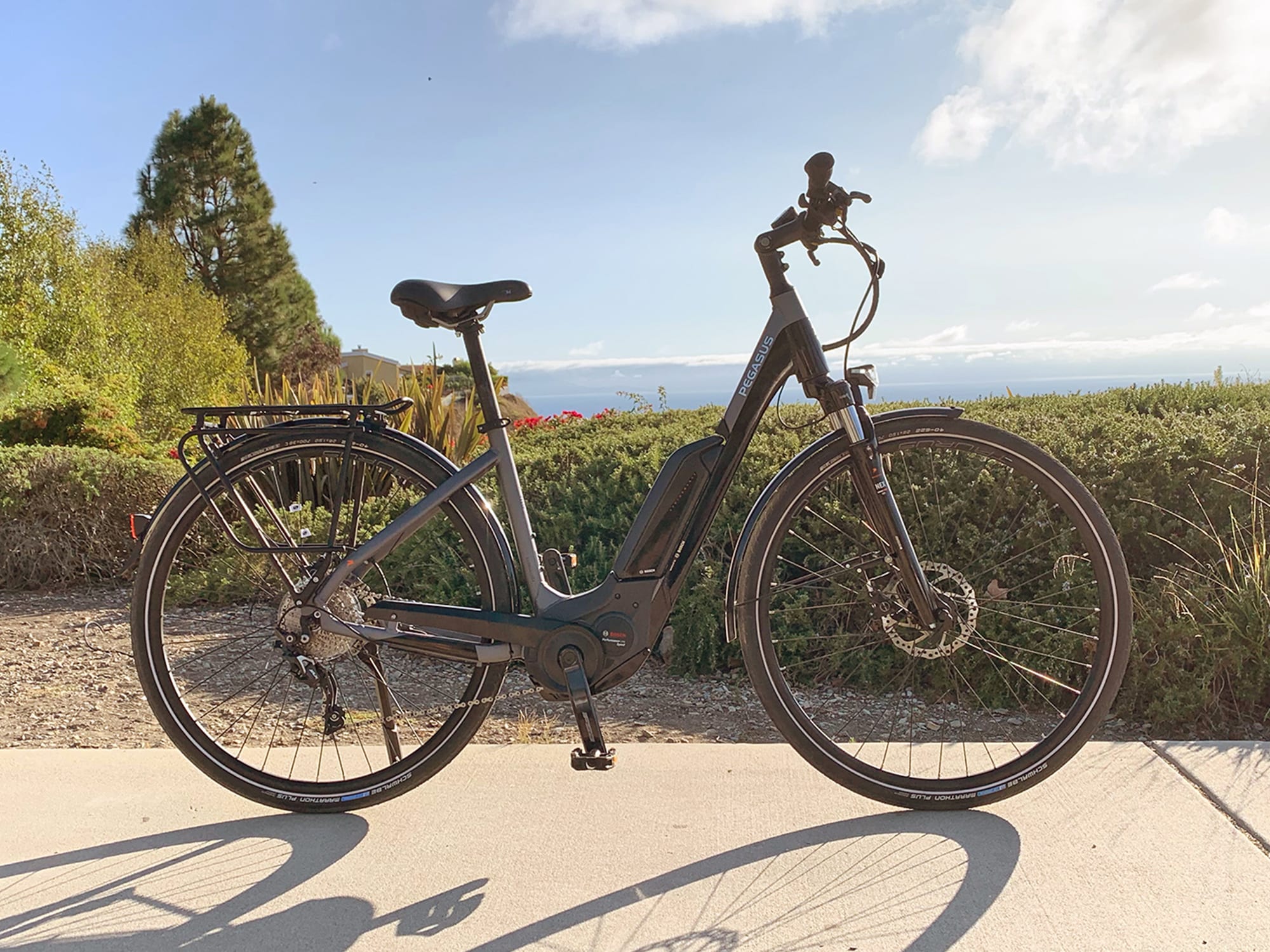

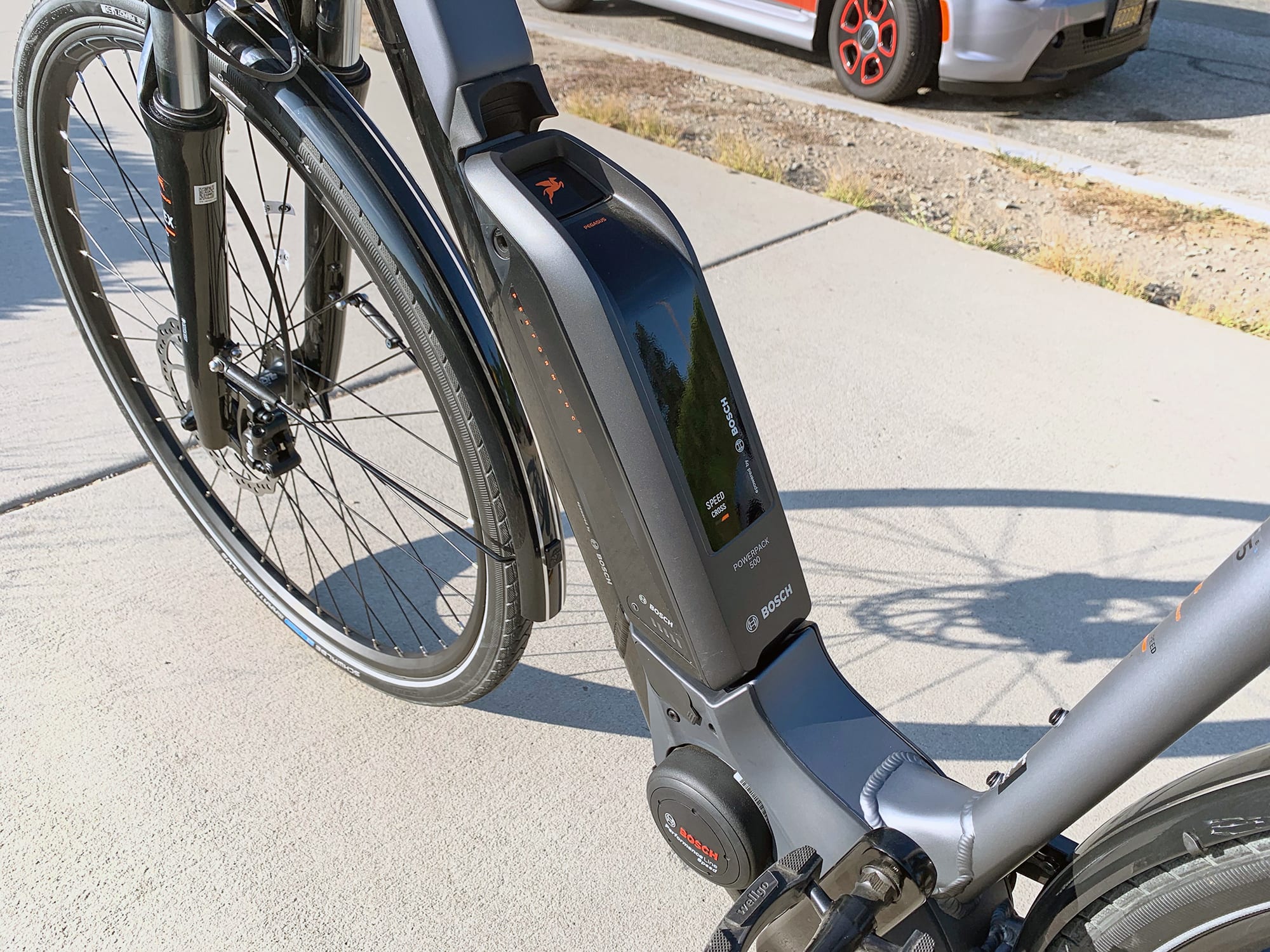
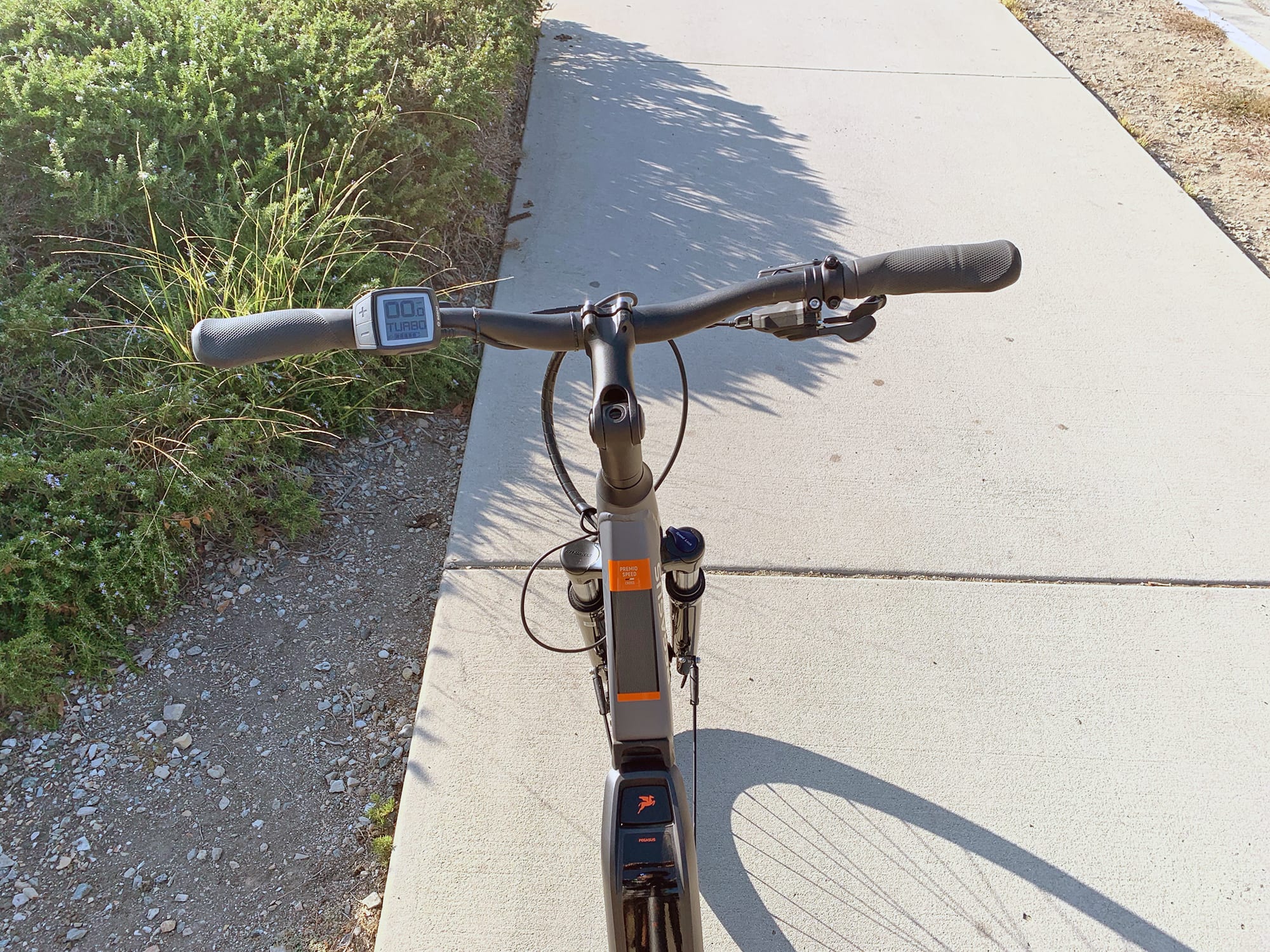
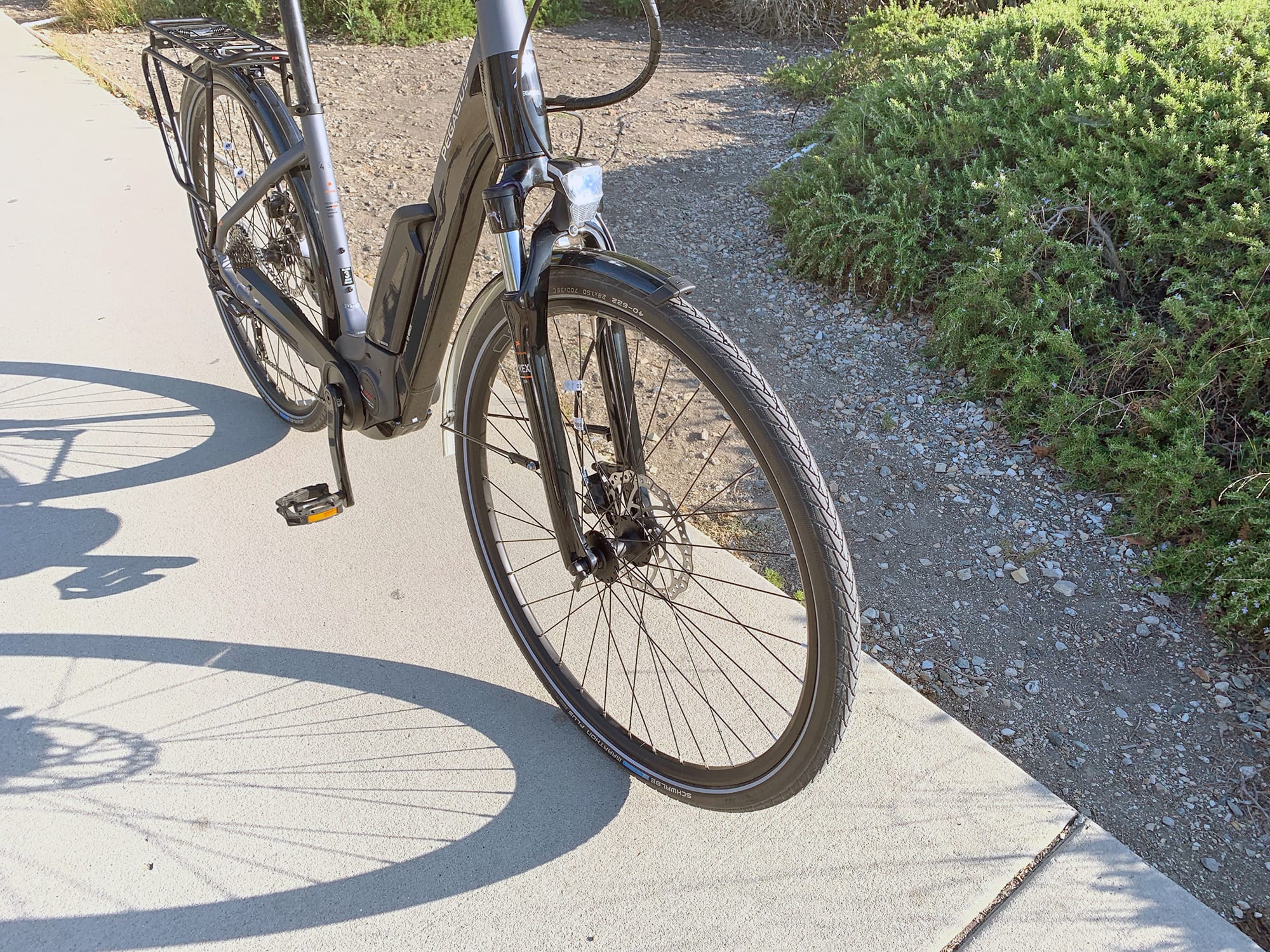
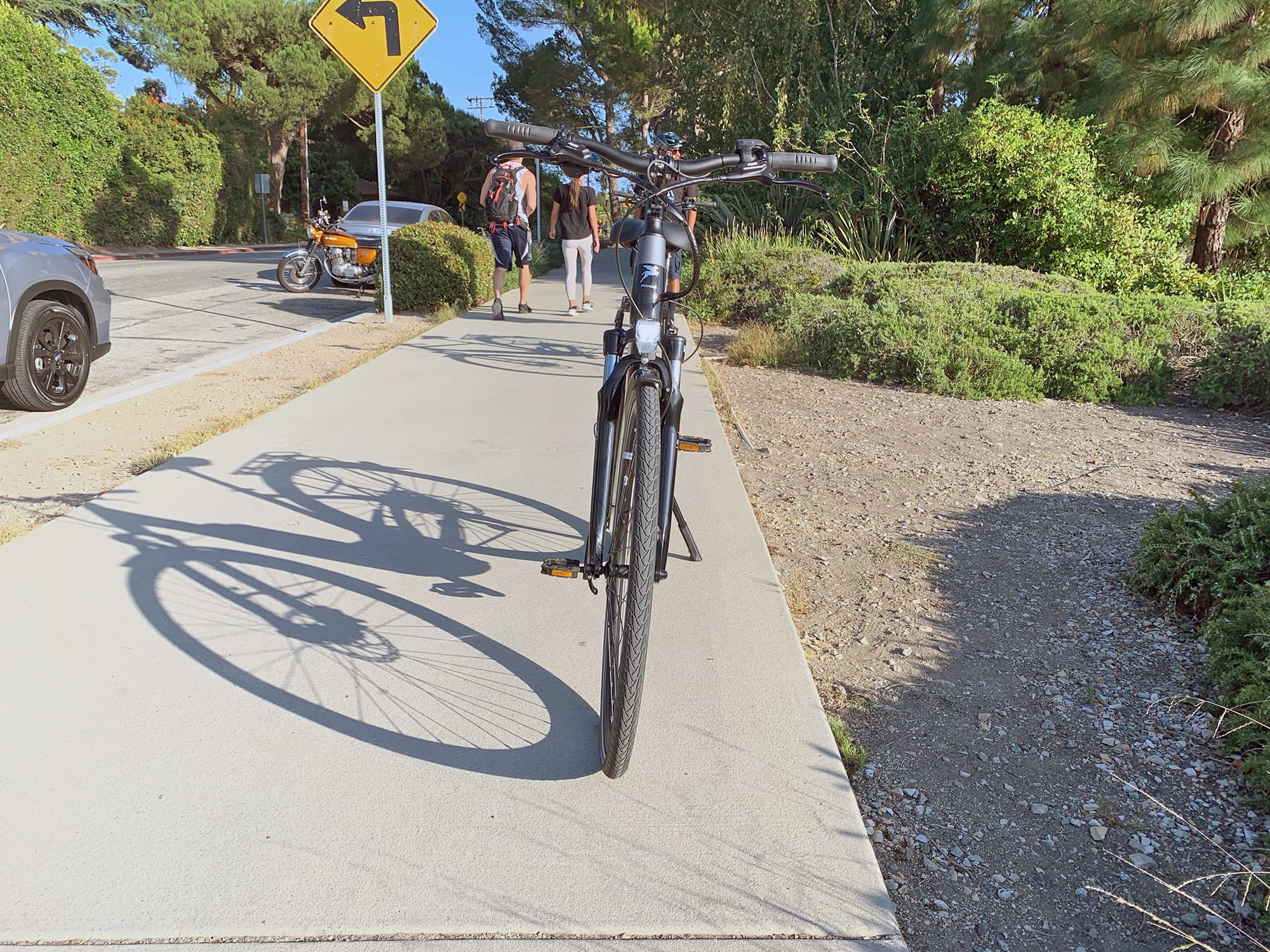
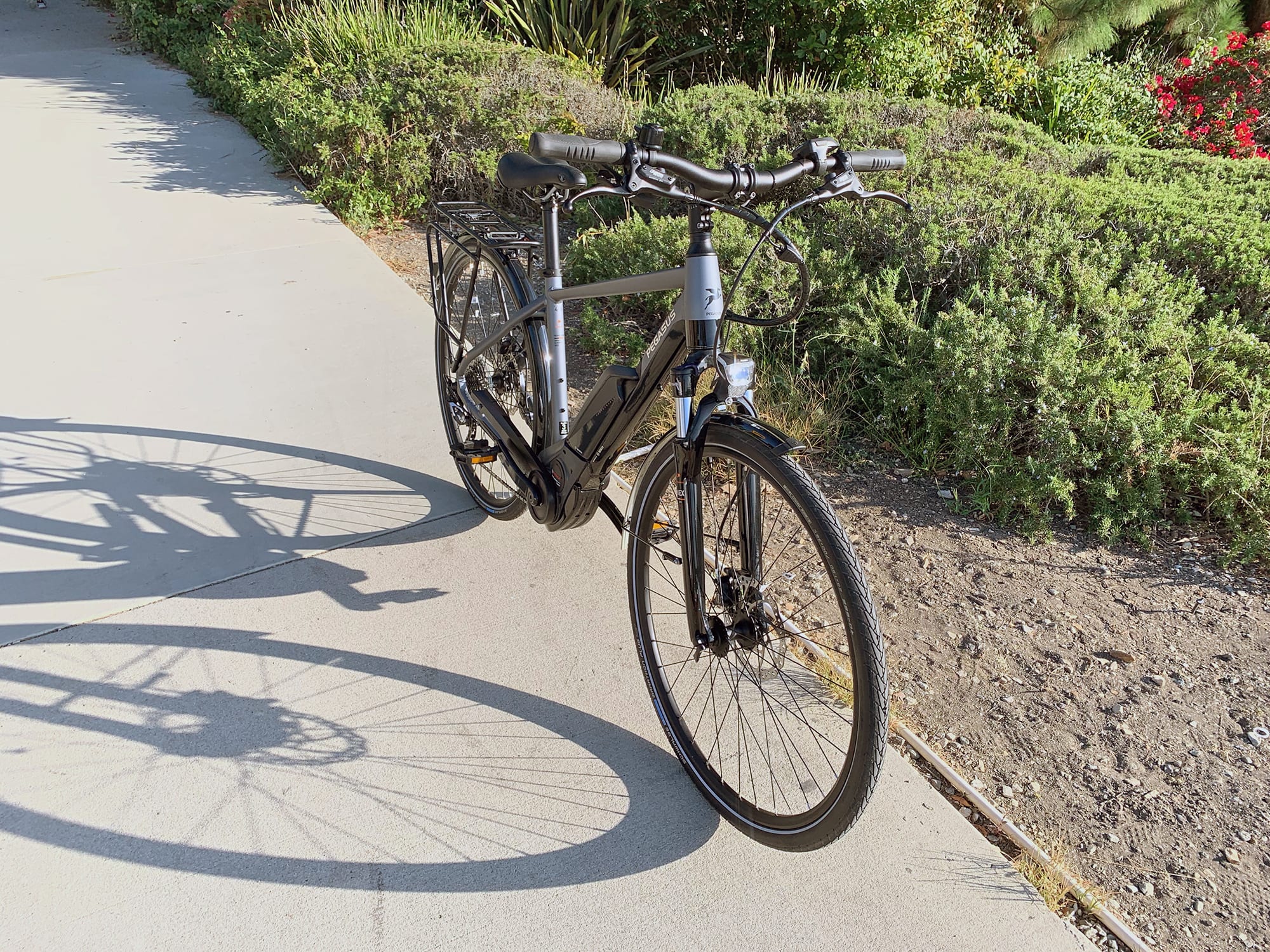


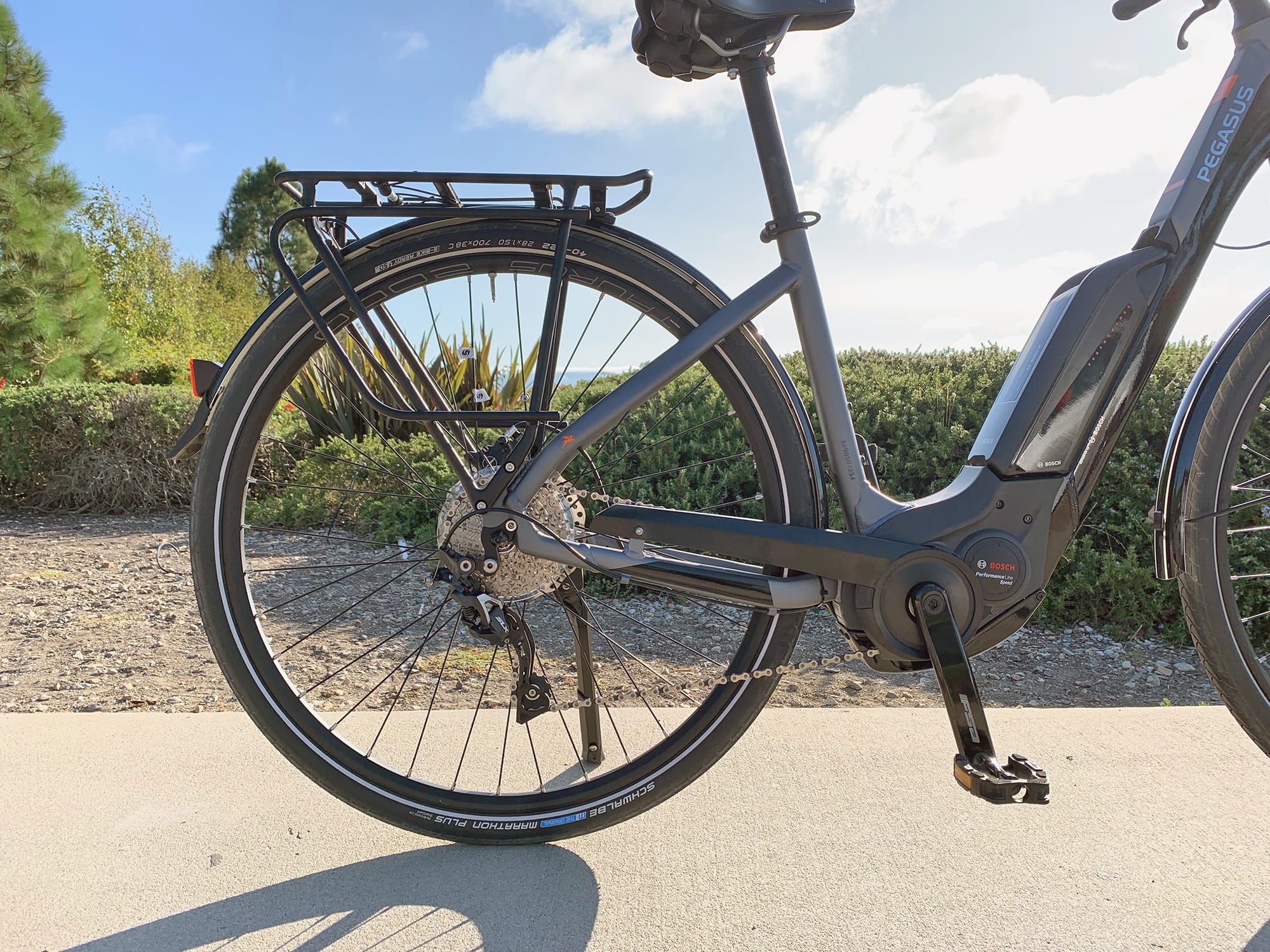
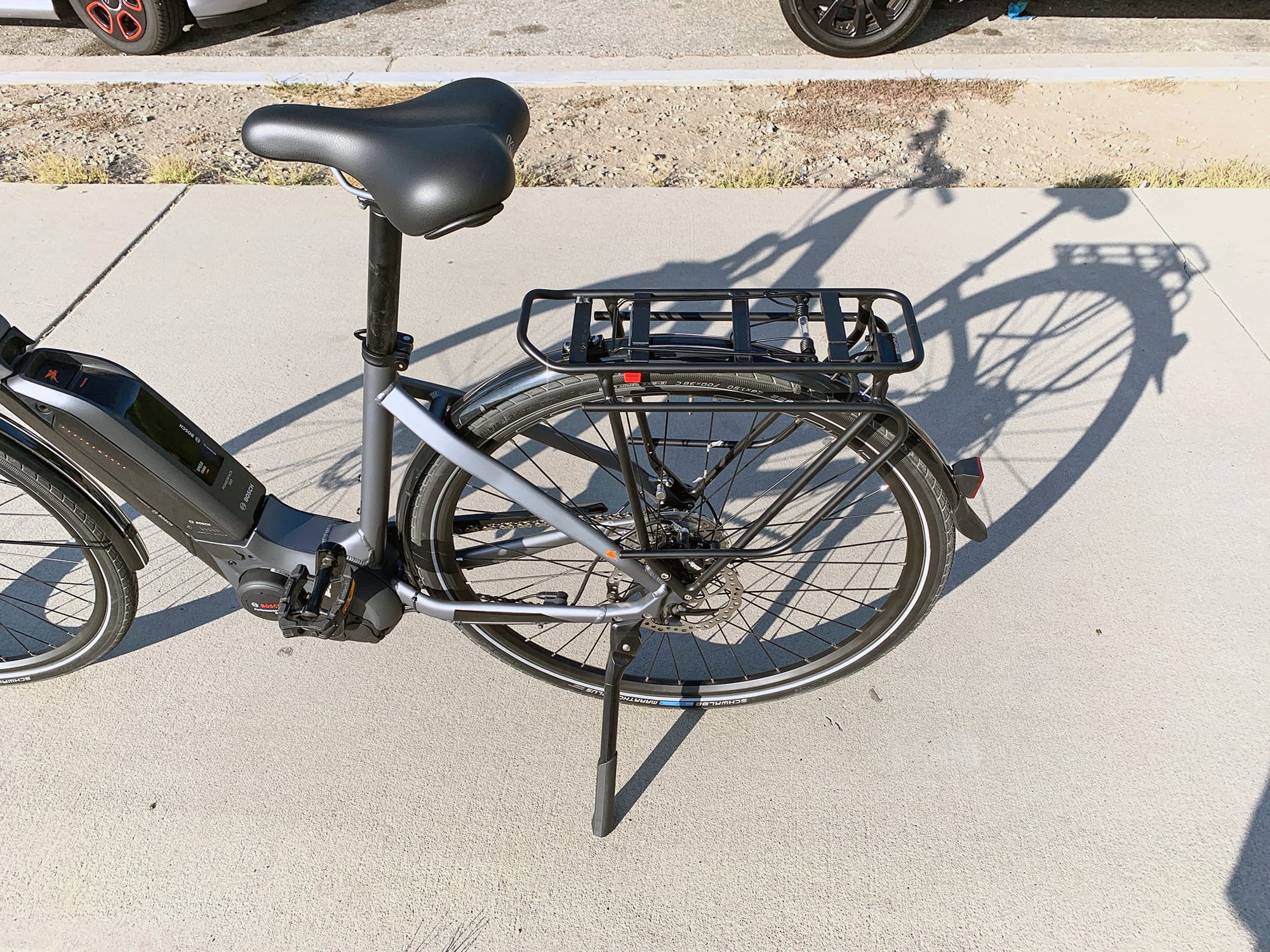
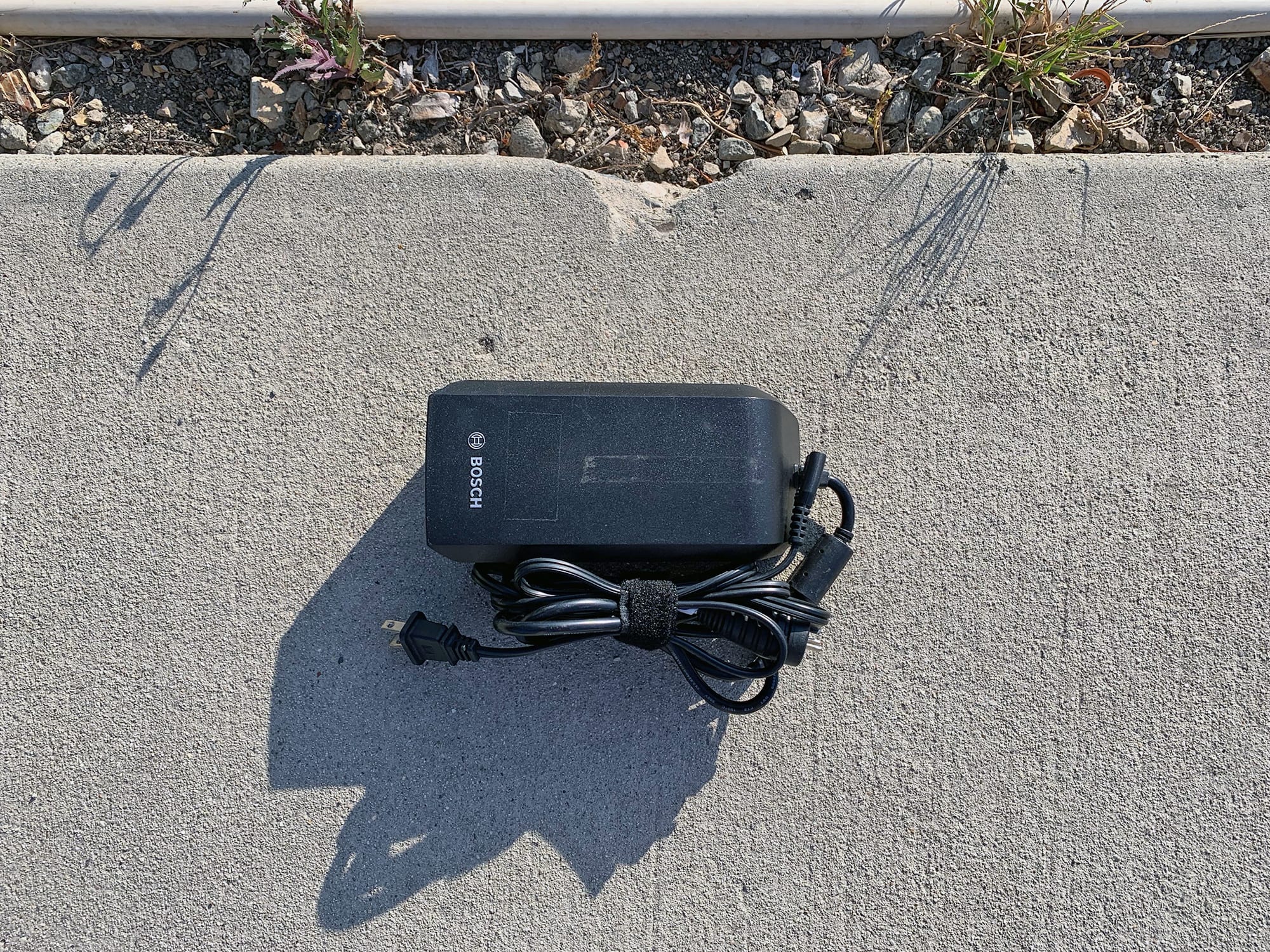
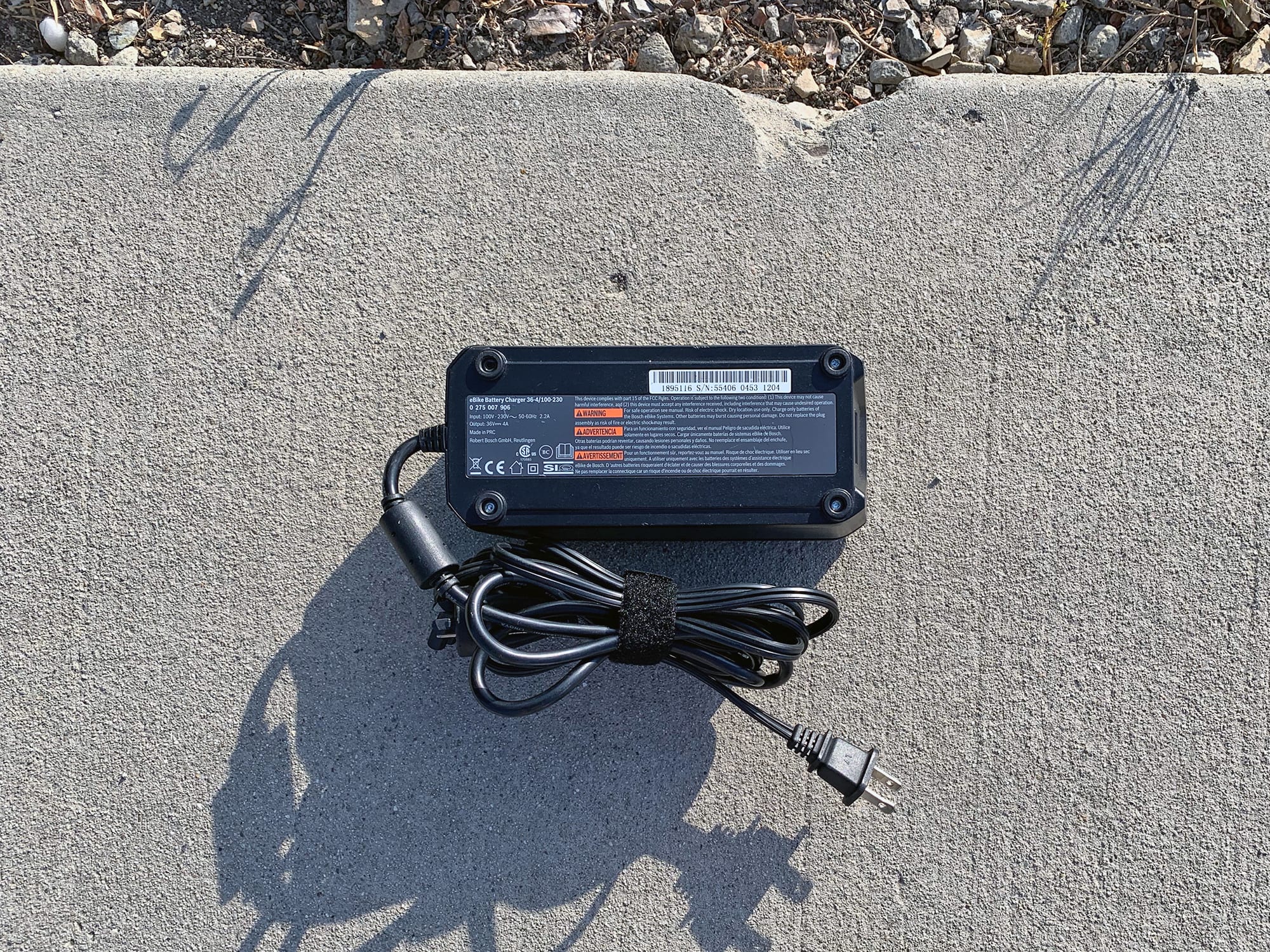
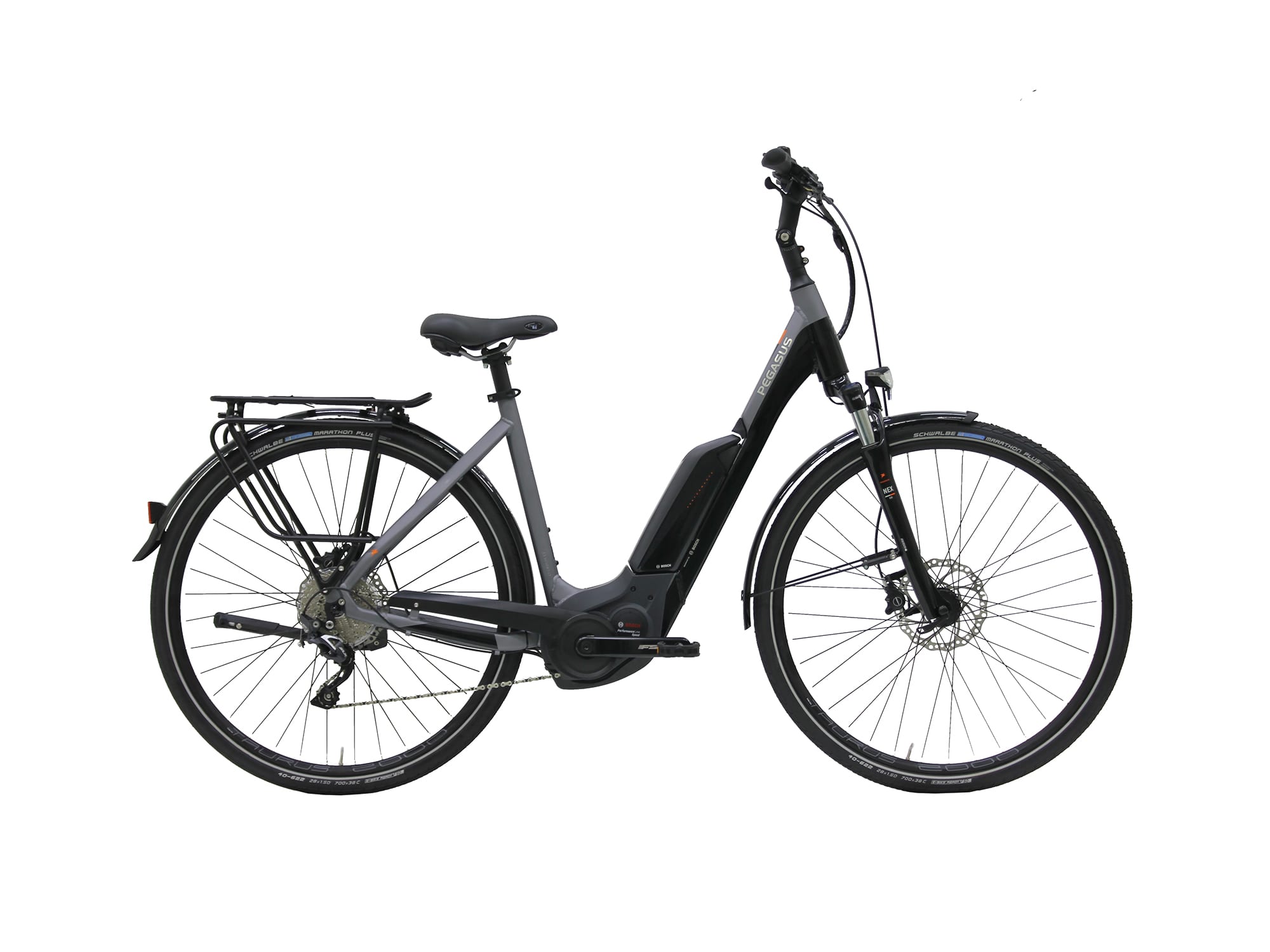
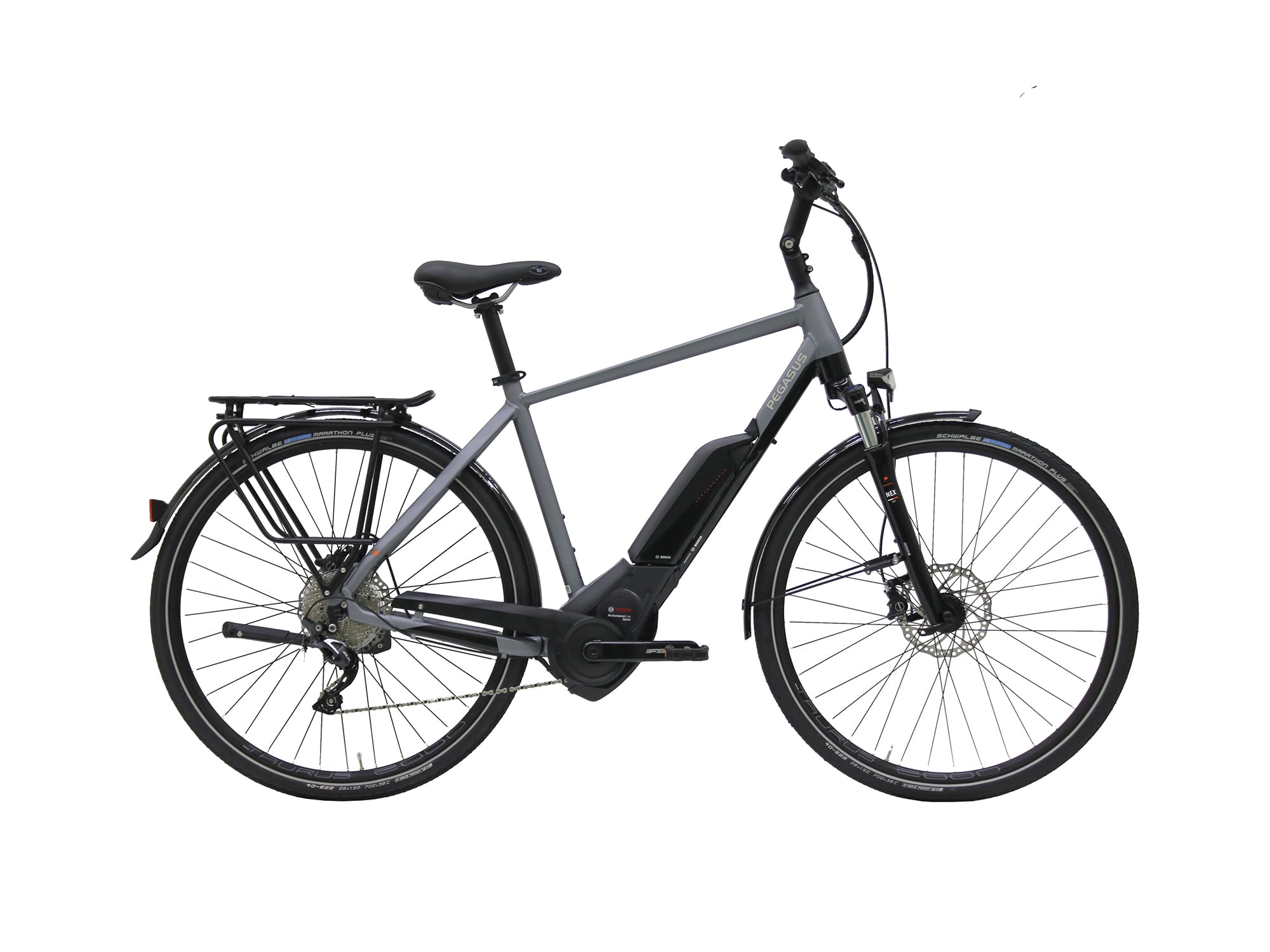


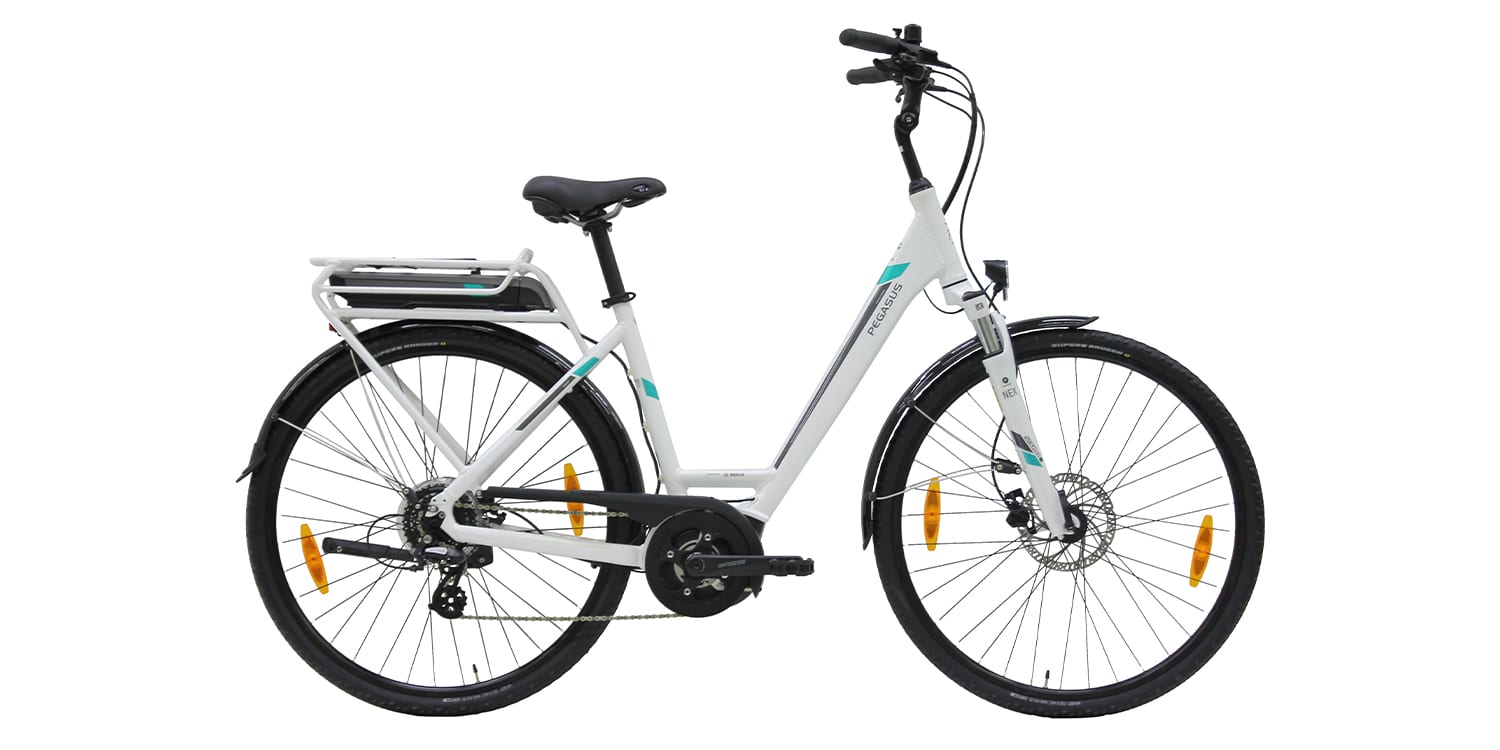
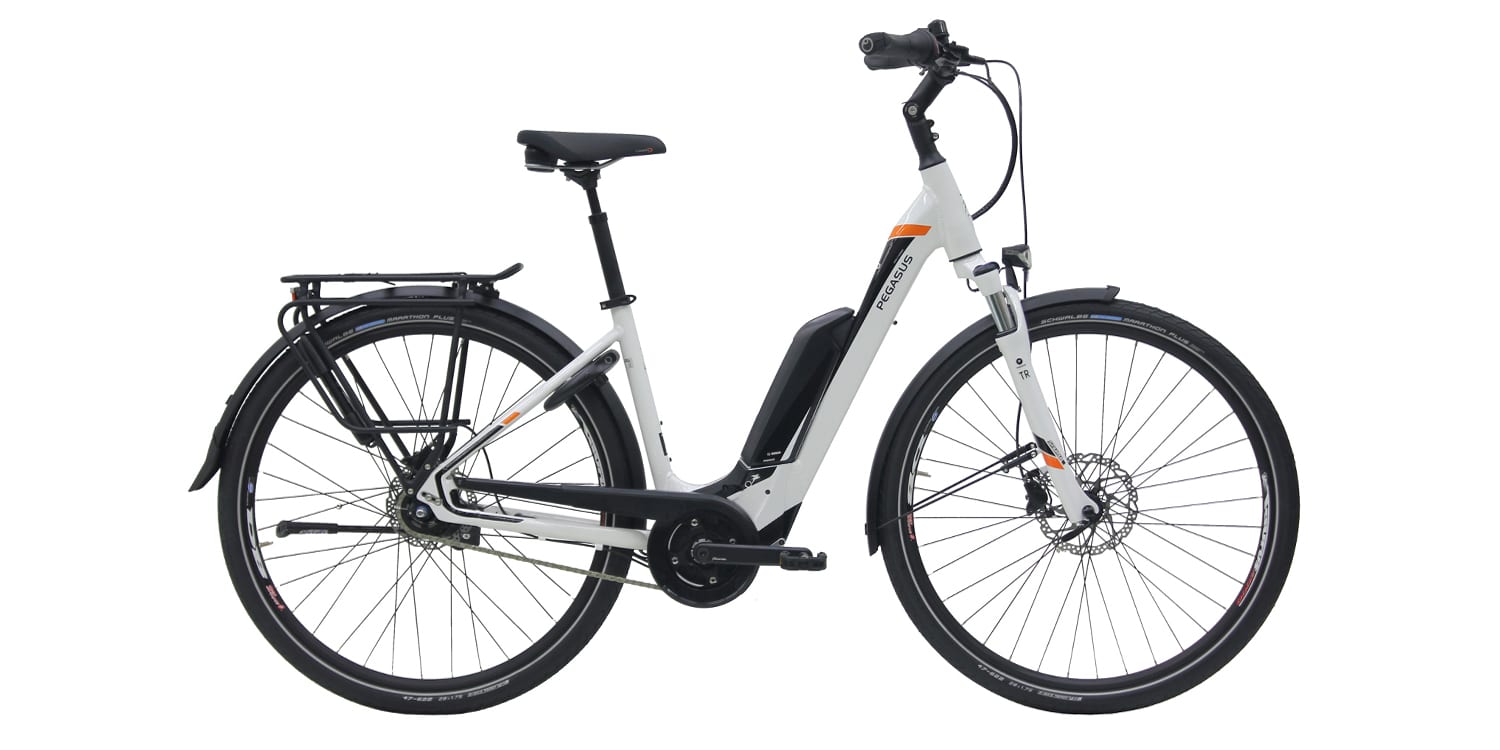
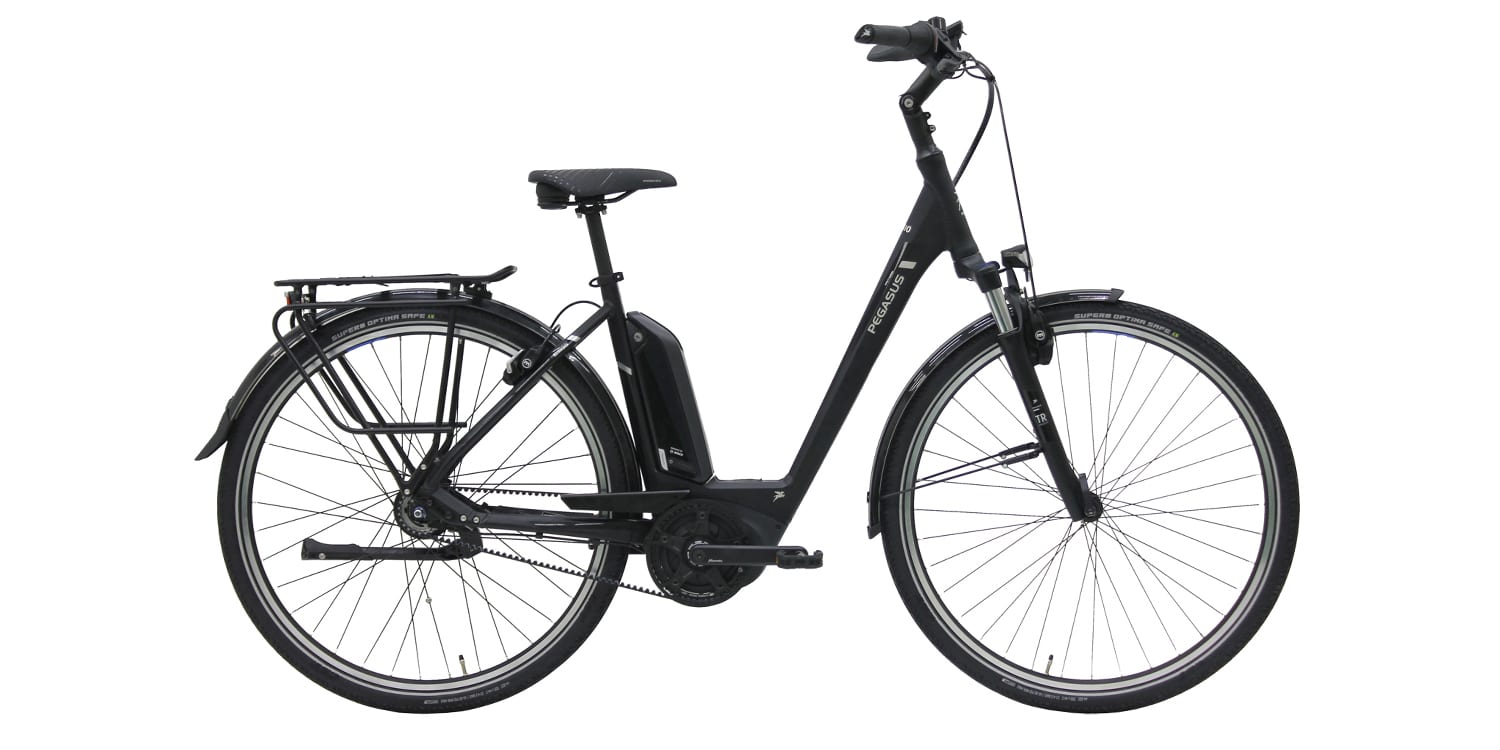
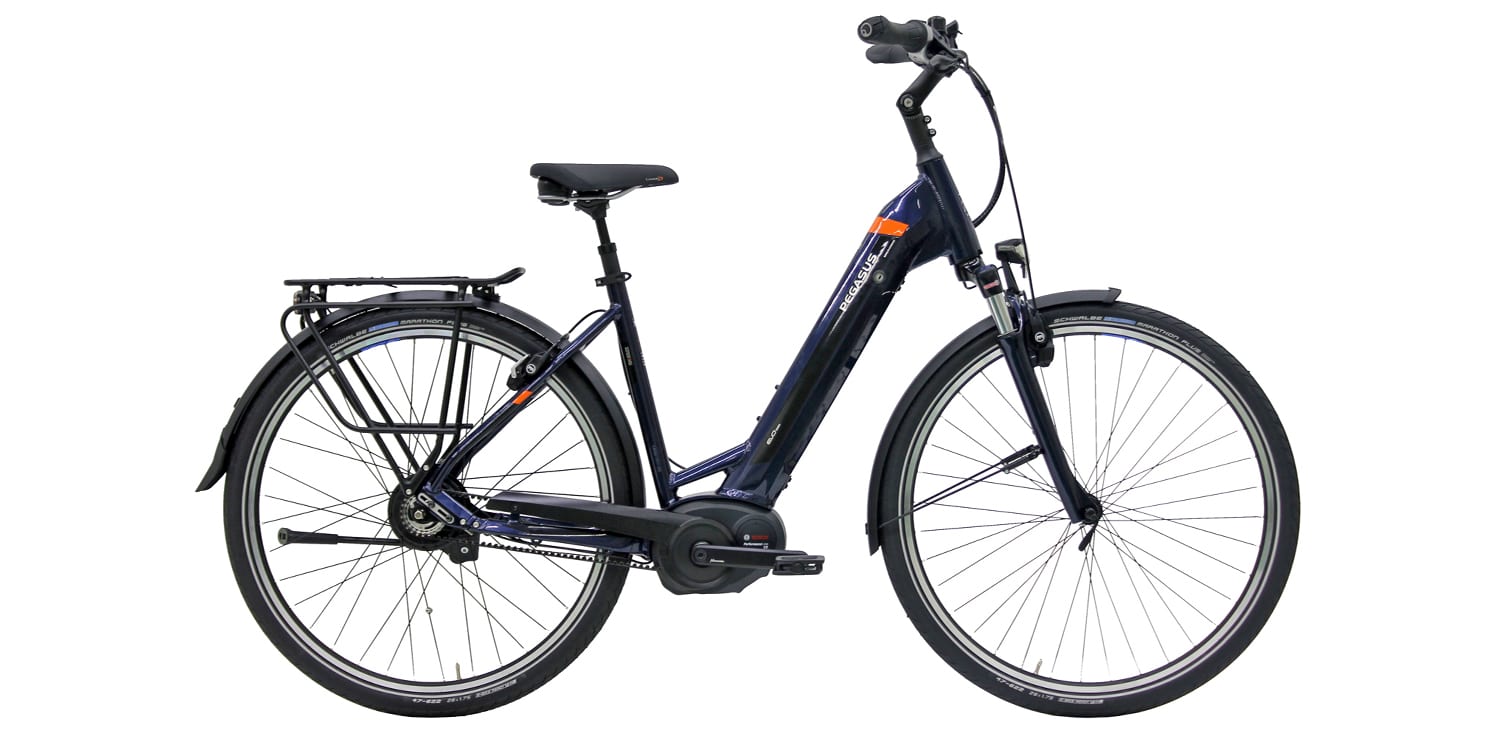
Reader Interactions